Empires have been built on the control of spirituality, of scientific knowledge, and of political power. For the Mayan Empire, centered in modern Southeast Mexico, the connection between the three was woven into nearly every aspect of society and allowed the Mayans to dominate the surrounding region in the first millennium C.E.
We do not have enduring texts from the Mayan Empire, with the exception of carved hieroglyphs which are only recently being deciphered. As a result, physical spaces and archaeological remains—including the hieroglyphs—serve as the primary sources for historians to study the empire.
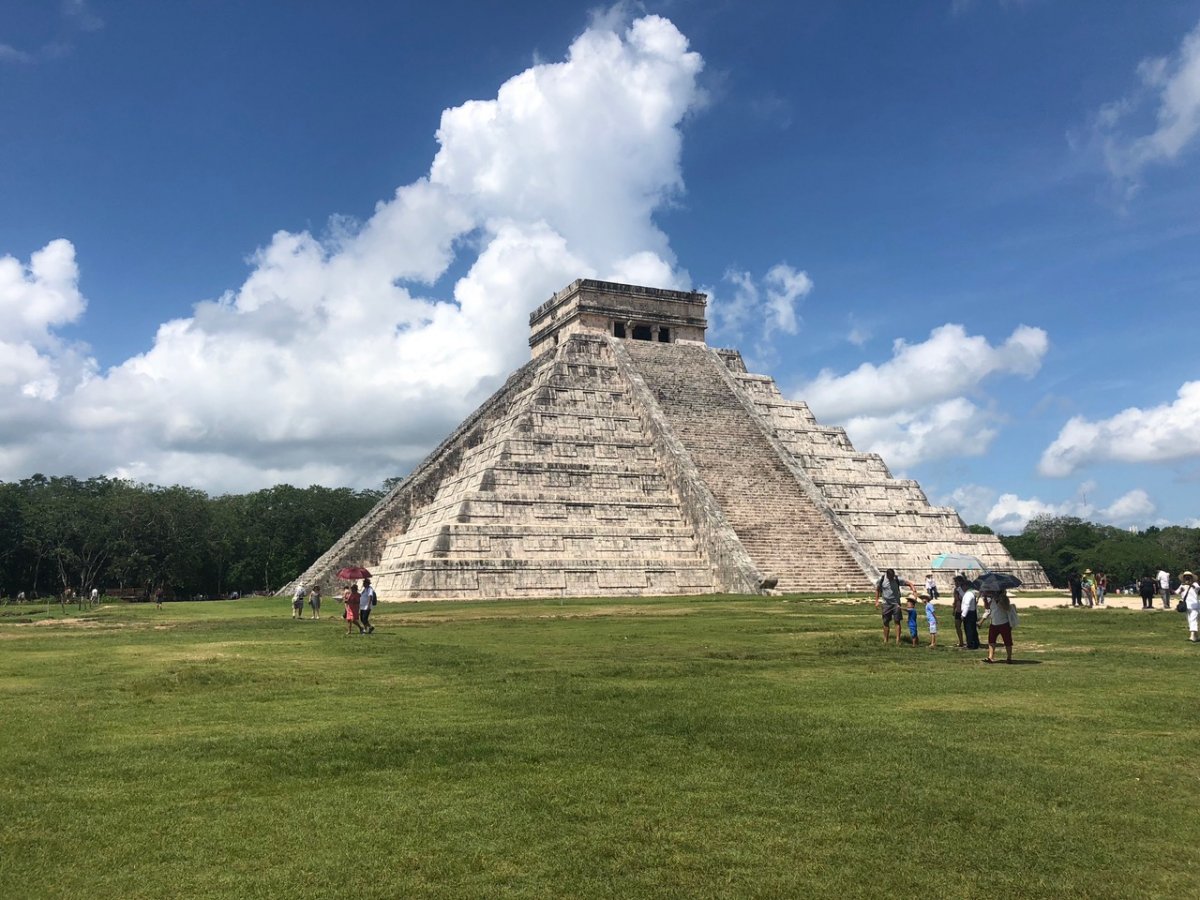
The Temple of Kukulkan at Chichén Itzá.
Walking through Chichén Itzá, one of the central and sacred sites of the empire, visitors can both see and hear representations of two important Mayan deities: Quetzalcoatl and Kukulkan. Quetzalcoatl is a tripartite deity: man, bird, and snake. He can be seen engraved on temples and walls in Chichén Itzá but he can also be heard.
If you stand at the base of the Temple of Kukulkan and clap your hands, you can hear the high-pitched chirping sound of Quetzalcoatl cascading up the temple terraces. The temple is a remarkable piece of architecture and a sophisticated example of acoustical engineering. When the ground surrounding the temple was full of people clapping, the sound would be an overwhelming homage to the deity.
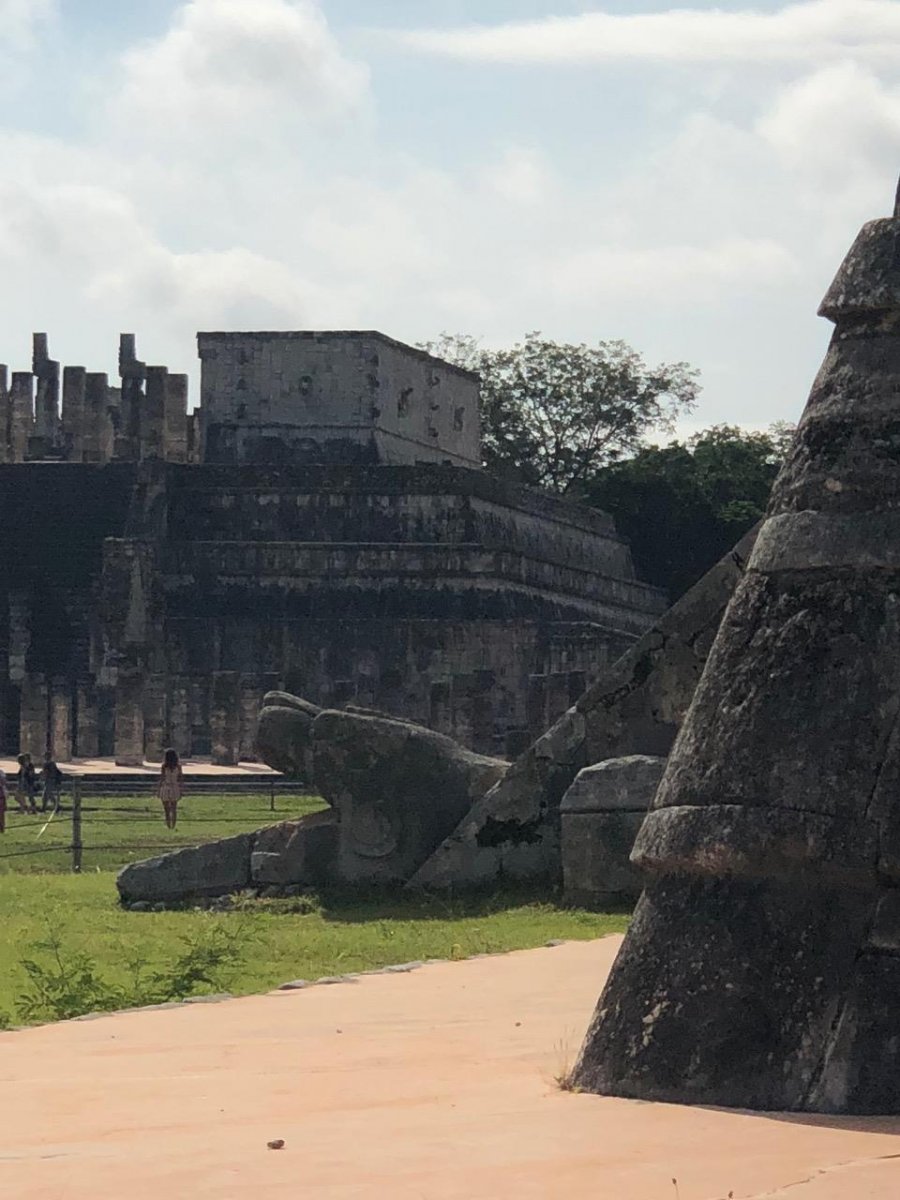
The Head of Kukulkan, the Mayan fertility god.
Kukulkan, the god of fertility, can also be heard in Chichén Itzá and seen in its various structures. Kukulkan takes the form of a rattlesnake who descends to earth to fertilize the land on the fall and spring equinox.
On those two days, the sun casts a shadow across the terraces that make up the Temple of Kukulkan, which gradually reveal the triangular segments of Kukulkan’s body, leading to the stone snake’s head where the temple meets the earth. From the Temple of Kukulkan, turning to face the Temple of 1,000 Pillars and clapping once draws an echo that rings through the steps of the temple, creating the sound of Kukulkan’s tail, rattling seven times.
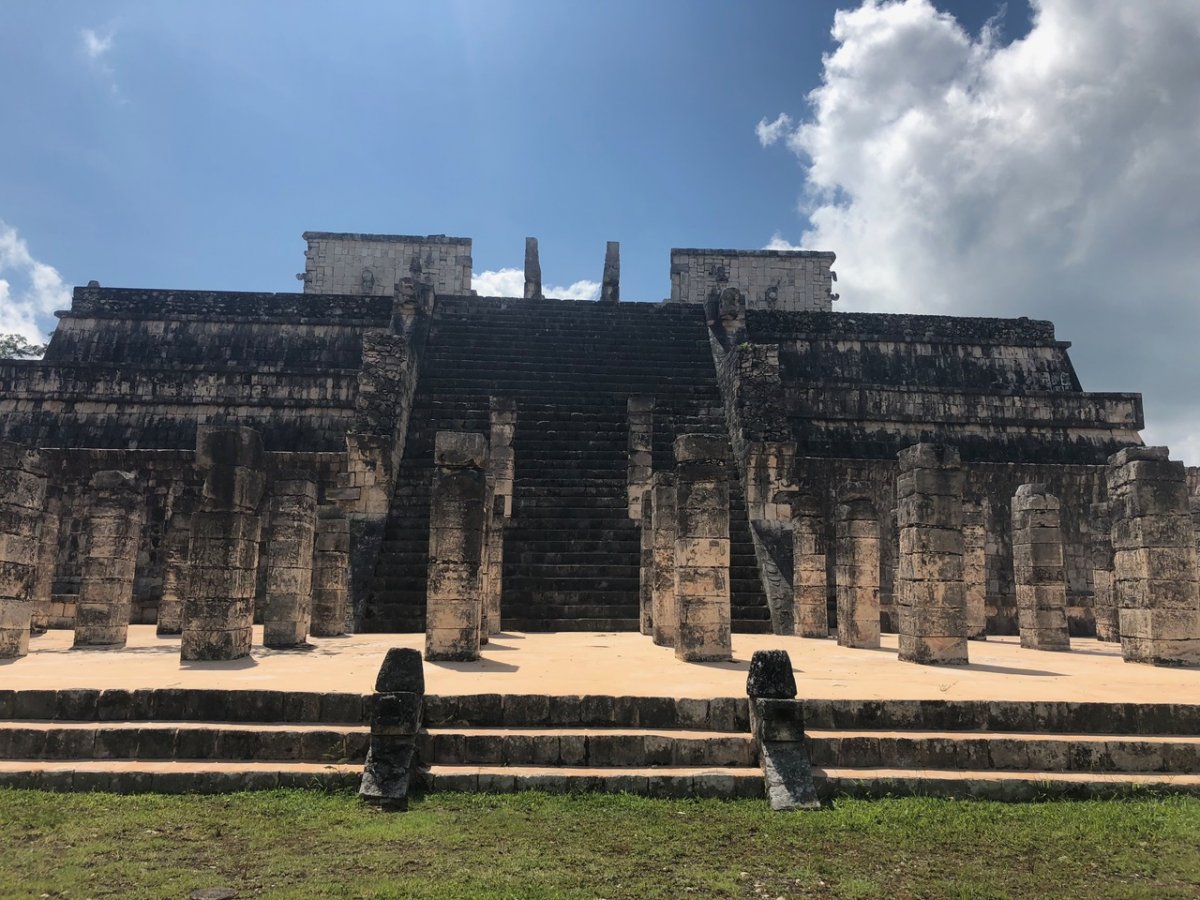
The Temple of 1,000 Pillars at Chichén Itzá.
Historians can understand the value the Mayans placed on deities and their devotion to pleasing them not only through the physical construction of Chichén Itzá but also through the evidence of human sacrifice. Sacrifices in the Cenote Sagrada, the Sacred Waterfall, were also tied to the Mayan astronomical calendar. To understand this connection requires an understanding of the physical construction of the Temple of Kukulkan, the god to whom the sacrifice was offered.
The four sides of the temple represent the four seasons of the year. Each side has a central staircase with 90 steps, one for each day of the season. This leaves five days unaccounted for. These “unlucky days” believed to be August 11-15, are so called because children born on those days would be sacrificed in the Cenote Sagrada. (Archaeologists have found the remains of sacrificed children and some adult men.) If the clouds prevented the sun from casting the shadow of Kukulkan’s body, the earth would be left unfertilized. Human sacrifice would be atonement for unfertilized land.
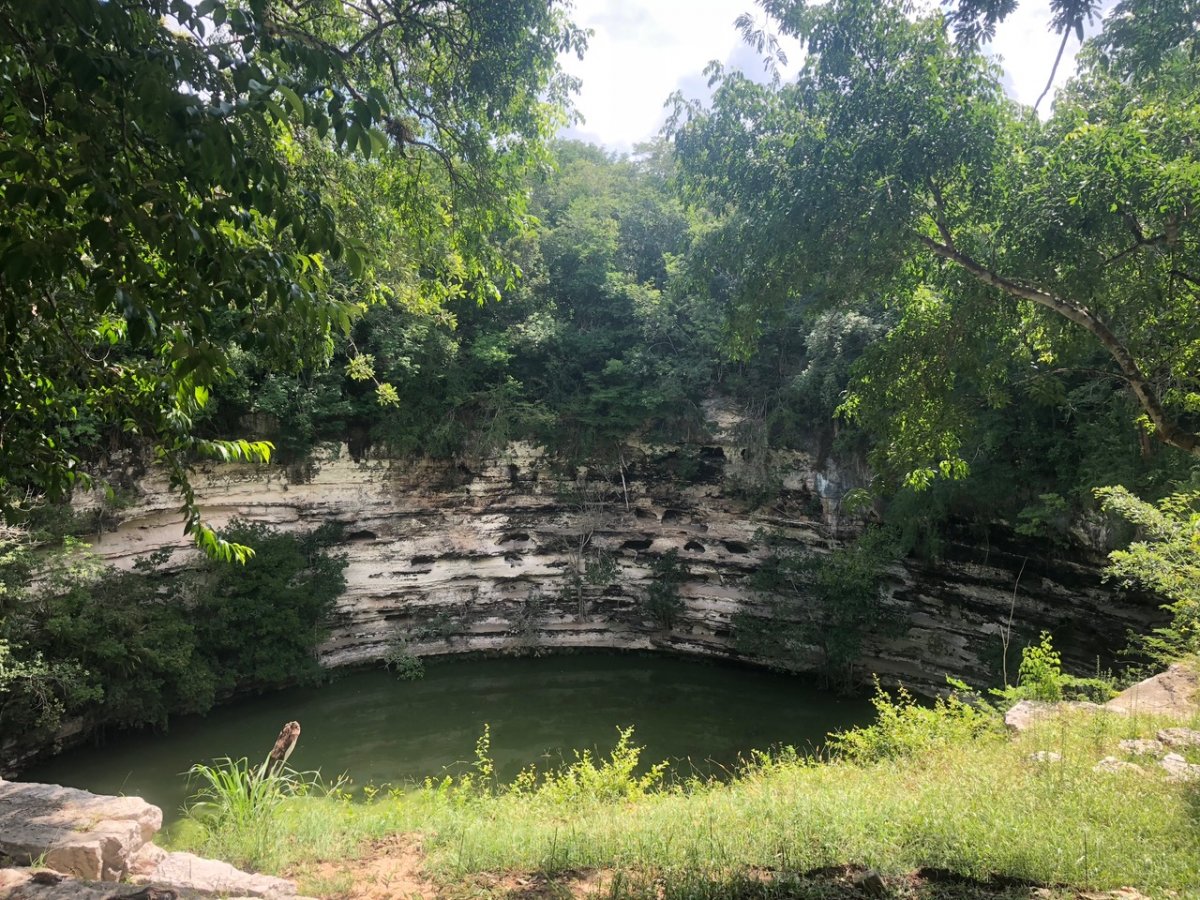
Cenote Sagrada, the Sacred Waterfall where historians have found evidence of human sacrifice.
But the equinox was only one of the many astronomical events that the Mayans used as guides for society. The placement of the different temples throughout Chichén Itzá align with the position of the planets, sun, and moon at specific times of the year. Astronomy was crucial to the Mayan calendar and the determination of cycles—periods of 5,125 years—the most recent of which ended on December 21, 2012.
The political power of the Mayan Empire is also on display at Chichén Itzá. TThe Mayans built 4,000 miles of roadways to connect the city with the disparate regional tribes over whom they exerted authority through both sport and the collection of tribute. With a powerful army of loyal warriors and such an extensive network of roadways connecting other tribes to Chichén Itzá, surrounding civilizations had little choice but to yield to the Mayan emperor.
If a tribe decided not to pay tribute, the warriors would take prisoners from them, invite all of the local leaders to Chichén Itzá, and ceremoniously behead the prisoners as a warning to everyone that there was no opposing the emperor. Faces believed to be of these executed prisoners were carved into a wall as a permanent reminder of the power and authority of the emperor.
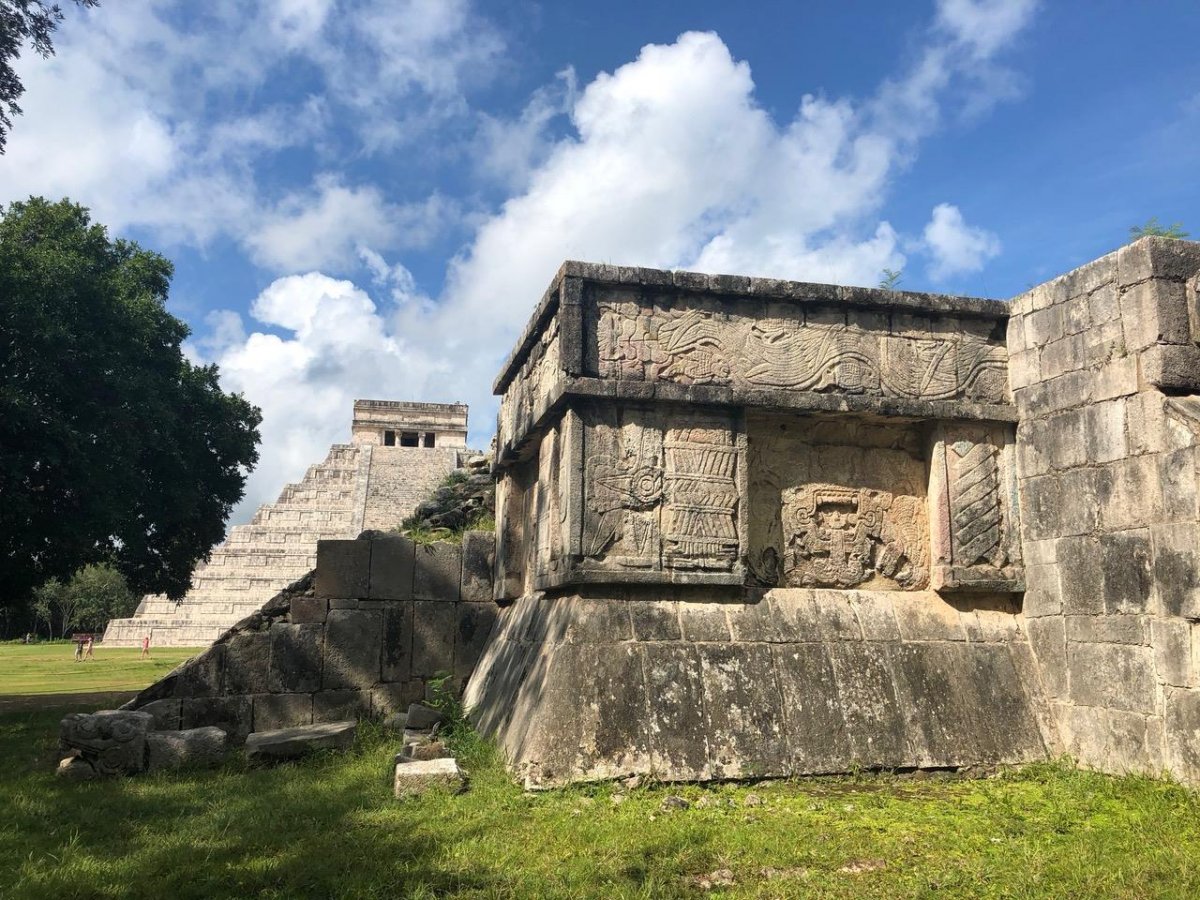
The Temple of Venus at Chichén Itzá.
Sports were another way the Mayans at Chichén Itzá asserted dominance, as well as allegiance to their gods. Pok Ta Pok is a game in which teams of seven attempted to march down the field and maneuver a heavy rubber ball through a small stone hoop, raised high above the ground on the side of the field, without using their hands or feet. The reward for the winning team was that their captain would be sacrificed to the gods. It was a high honor to be sacrificed, so the losing team would continue to play until they won, giving their captain an opportunity to give his life for the gods.
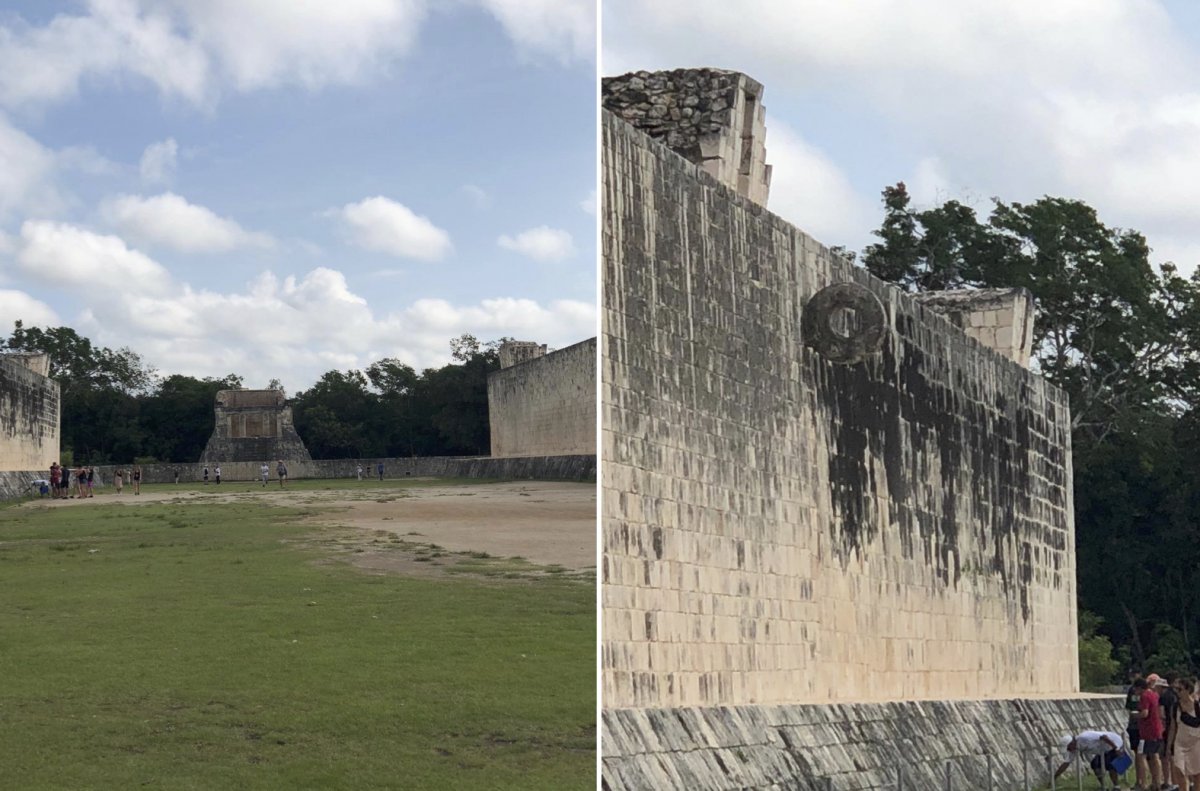
Where the Deadly Game Was Played: A Pok Ta Pok field (left) and goal (right).
Chichén Itzá is now preserved as a UNESCO World Heritage Site. It stands as a vast historical source that enables visitors to glimpse the spiritual world, the scientific achievement, and political reach of a society that not only thrived from 250-900 C.E., but a culture that is still very visible in Southeast Mexico today.
[All photos by author]
